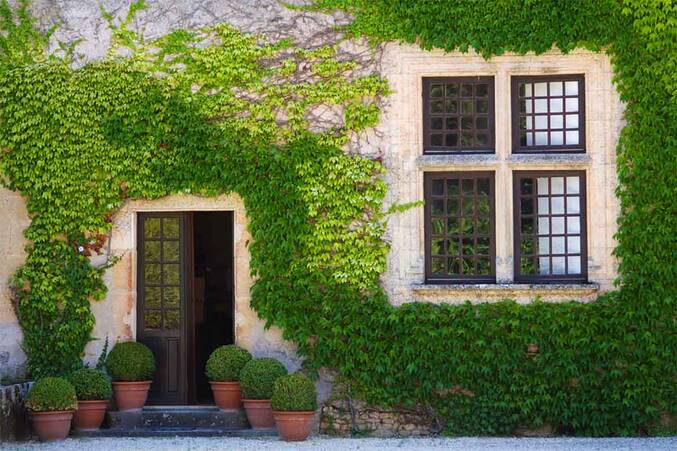Photographs: Shutterstock, icwow.blogspot.in
Creepers are a very important part of the landscape. They create a soothing effect and blossom throughout the year. Lasting upto 40 years if maintained properly, creepers can be planted any time of the year. Plant expert Pranay Chugh lists the different types of creepers that can be planted at home.

1Bigonia venusta:
This creeper can grow to a height of 15 feet. It gets orange colour trumpet shape flower and can grow in sun or semi-shade areas. The flowering takes place in summer months, ie February, March and April.

2Malphigia:
This creeper produces small white flowers and does not gain too much height (1 to 2 metres). It can be attached to an aluminum wire and can be trained to create shapes. It flowers throughout the year. This creeper is good to create bonsai, attracts bees, can grow in full sunlight and requires well-drained soil.

3Aparajita:
Produces blue colour flowers. It blossoms all through the year producing delicate blue flowers. Besides reducing stress and enhancing memory, this creeper is useful to alleviate pain, swelling, etc. Its leaves can be juiced and used as nasal drops. It cures headache as well. It helps people with brain damage or digestion issues.

4Mandevilla:
An excellent addition to your home or backyard, the creeper has red and white flowers. Its growth is slow but looks beautiful and flowers round the year. This creeper needs shade and gets burnt in sunlight. It needs support to grow. So ensure you put up a trellis to make it grow well.

5Rakhi be (Passiflora):
This creeper produces purple and red colour flowers throughout the year. These grow into tender shrubs, and have evergreen leaves. The leaves are dark green in colour and its flowers grow in 8 cm width and have coronal filaments.

6Allamanda blanchetii:
This creeper gets pink tinted flowers and changes colour in winter season. The highest height this creeper can gain is 9 – 18 feet. It requires full sunlight or light shade to grow well. In winters, the creeper requires soil that is not very moist.

7Ivy:
This creeper can gain a growth of approximately 50 feet. With 5 leaflets, the green leaves have a tint of red when they first appear. Unlike other creepers that require support, Ivy can stand alone as well. It grows faster and the blooming season is June to August.

8Taecoma:
A great attraction for humming birds, taecoma flowers are orange or blue in colour. It blossoms throughout the year. As this creeper can gain a height of 30 to 40 feet, ensure that pruning is done so that their size is kept under control. This creeper requires less water, so water only when needed.

9Ipomoea sloteri:
This cardinal climber gets red colour trumpet shape flowers and blossoms during the summer season. Rich soil and additional fertilizer is not required for the growth of this creeper. In case of a young plant, water it regularly till it reaches one to two inches. This climber is mostly pest free.

10Nelsonia:
This is also known as Blue Pussyleaf and grows in shaded locations. The stems of this creeper can gain a height of approximately 35 cm. The flowers are blue, white or purple in colour. Leaves appear in opposite directions and flowers bloom from the cylindrical spikes that appear at the end of the branch. Considered a herb plant, the roots of this creeper goes deep into the ground. This creeper including its root can be used as medicine for diarrhea, inflammation, etc.
Potting: Creepers should be usually planted in the ground but if you plan to use a pot, you should use one with a diameter of at least 20 in. A small pot would restrict the growth of the plant. The potting technique for seed and plant is the same. Plant should be used in a house and seed can be used for commercial purpose because it is a lengthy process.
Maintenance and care:
- To give the creeper shape, you can use an aluminium wire or use coconut twine.
- Water the creeper daily otherwise it will start shedding flowers.
- Plants are prone to fungus and black mites. Use insecticides like rogor and fungicides to cure them. For plants affected by fungus, wash the plant with pressurized water jet and then apply the fungicide.

















